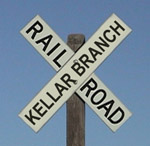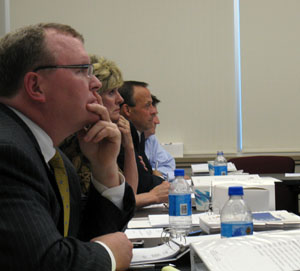 I’ve been saying it ever since the sphynxlike Kellar Branch Corridor Corporation first appeared that its clandestine efforts were going to cost the taxpayers lots of money. Now we know just how much: $1,250,969.
I’ve been saying it ever since the sphynxlike Kellar Branch Corridor Corporation first appeared that its clandestine efforts were going to cost the taxpayers lots of money. Now we know just how much: $1,250,969.
That’s the amount of money in taxpayer dollars the Peoria Park District is going to pony up to buy out the leasehold interests of two rail companies on the Kellar Branch rail line: Pioneer Railcorp and Central Illinois Railroad. Doing so will free up the middle portion of the line to be converted into a recreational trail.
But that’s the beginning. After they buy out the leasehold interests, they still have to actually build the trail, which will cost untold millions itself. In 2006, the estimated cost of conversion was just under $6.5 million.
But there are other costs. The City of Peoria actually owns the Kellar Branch. So in order for this plan to go through, the City has to give the Kellar Branch (technically, the easement) to the Park District. The appraised value of the Kellar Branch is $2,872,500. So how much is the City planning to ask for this valuable asset? $1. That’s right, $1. And the City doesn’t even get the salvage rights for the rails.
Perfect timing. Right on the heels of a City Council retreat where we learned the City is facing a $10-11 million budget deficit and is in dire need of a new revenue source, our illustrious City Council will likely approve a request next Tuesday to squander a nearly $3 million asset. Pioneer Railcorp at one time offered the city $750,000 for the line, but the City turned them down. No, they were holding out for the Park District’s winning bid of $1.
Anyone who thought that the Kellar Branch Corridor Corporation was buying out the rail carriers’ leasehold interests out of charity was naive. Included in that $1.25 million is $140,800 for the Corporation’s “expenses.” No list of expenses is given. I suspect it includes a little reward from the Park District for finally acquiring what they’ve coveted for so long.
For those of you keeping score, let’s see what our new grand total is for tax dollars wasted on non-essentials/poor investments:
| “Wonderful Development” (Downtown Hotel) | $37,000,000 |
| Peoria Riverfront Museum | $34,700,000 |
| Firefly Energy Loan Guarantee | $6,000,000 |
| Civic Center Expansion | $55,000,000 |
| Kellar Branch acquisition | $1,250,969 |
| Kellar Branch conversion | $6,441,738 |
| Total | $140,392,707 |
|---|
It’s like they say, pretty soon you’re talking real money. But we can’t afford to fix sidewalks or resurface streets, or fully staff our police and fire departments. Yes, I know I’m conflating expenses from several municipal organizations (City, County, Park District), but the fact is that all that tax money comes from the same source: our pockets. The Park District raising its property tax levy puts pressure on the City not to raise its levy. It’s all related.
Perhaps we could take those toll booths we’re removing from Riverfront Village and install them at the entrances to the Kellar Branch trail. Given the number of users predicted by the Journal Star, we should be able to solve our entire budget deficit by charging a modest toll.

 The Peoria City Council had their annual retreat Wednesday night at the Peoria NEXT Innovation Center on West Main street. All the council members, the Mayor, and City department heads attended the retreat.
The Peoria City Council had their annual retreat Wednesday night at the Peoria NEXT Innovation Center on West Main street. All the council members, the Mayor, and City department heads attended the retreat.